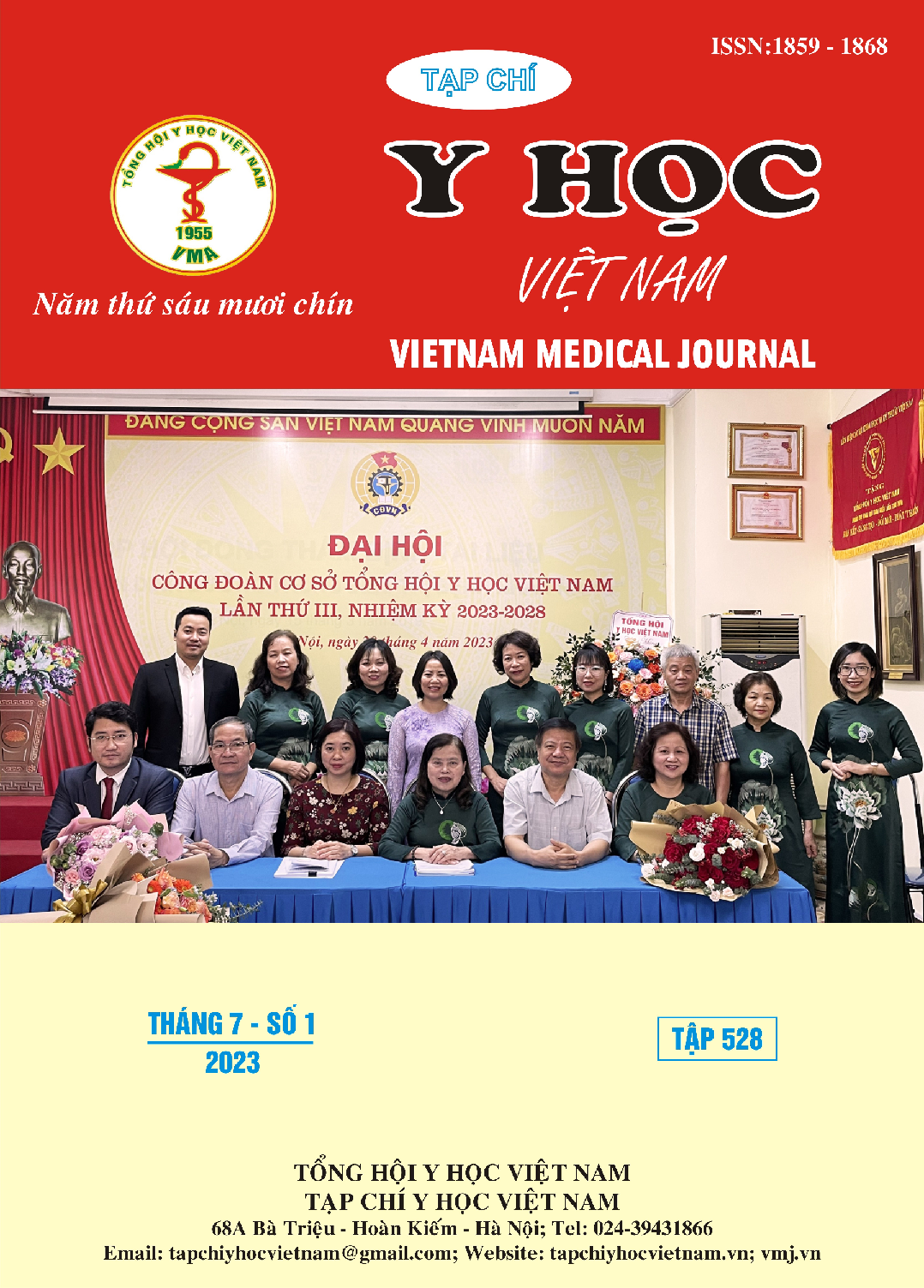SHORT AND MEDIUM – TERM CLINICAL, ECHOCARDIOGRAPHY OUTCOMES OF BIOPROSTHETIC AORTIC VALVE REPLACEMENT
Main Article Content
Abstract
Objective: Indications of bioprosthetic aortic valve replacement. Short and medium – term clinical, echocardiography outcomes of bioprosthetic aortic valve replacement in Heart Instutute Ho Chi Minh City from 1/2010 to 12/2015. Methods: Retrospective and prospective studies, longitudinal monitoring. Study period from 1/2010 to 12/2015 with a total of 101 consecutive patients, who underwent bioprosthetic aortic valve replacement surgery at Heart Institute Ho Chi Minh City. Results: The mean age was 63,6 ± 9,7, youngest 20 years old, oldest 82 years old; 50 – 70 years old (70,3%), patients > 70 years old (24,8%), and patients < 50 years old (4,9%) (mainly female of reproductive ages with 80%, from 20 to 41 years old, the mean age was 29,4 ± 7,6). Before surgery: NYHA II (76,2%), NYHA III (13,9%), NYHA IV (4%). Most of the indications of bioprosthetic aortic valve replacement were at IB. The valve types were Carpentier – Edwards (36,6%), Epic Saint Jude (32,7%), Trifecta Saint Jude (27,7%). The mean biological aortic valve size was 20,8 ± 1,6 mm; valve size 21 mm (47,5%), 19 mm (31,7%) and 23 mm (17,8%). Coronary angiography before surgery (95,1%); most patients over 40 years old, ejection fractions ≤ 50% had coronary angiography. Severe coronary artery stenosis (24%) mostly underwent coronary artery bypass surgery. Short-term complications: endocarditis requiring reoperation with one (1%), biological aortic valve thrombosis with 1 (1%). Short and medium-term mortality with two (2%) and three (3,1%). Clinically, most of the patients no symptoms of heart failure, short-term (80,8%), medium-term (90,6%), left heart chamber sizes, ejection fractions and systolic pulmonary pressure significantly improved (p < 0,05), bioprosthetic aortic valves works well, no valve degeneration in the medium-term follow-up. Conclusions: Bioprosthetic aortic valve replacement is mainly performed in elderly patients and women of reproductive ages. Indications of bioprosthetic aortic valve replacement is mostly IB. The most commonly used bioprosthetic aortic valve types were Carpentier-Edwards, Epic Saint Jude and Trifecta Saint Jude. The mean biological aortic valve size were 20,8 ± 1,6 mm. Coronary angiography before surgery in elderly patients, reduced ejection fraction, risk factors for coronary artery disease, the most cases of severe coronary artery stenosis are bypassed. Short and medium-term clinical results, low complications, almost no symptoms of heart failure; bioprosthetic aortic valves work well, left heart chamber sizes improved, systolic pulmonary pressure, left ventricular systolic function significantly over time.
Article Details
References
2. Baumgartner H, Falk V, Bax JJ, De Bonis M, Hamm C, Holm PJ, Lung B et al (2017). "2017 ESC/EACTS Guidelines for the management of valvular heart disease: The Task Force for the Management of Valvular Heart Disease of the European Society of Cardiology (ESC) and the European Association for Cardio-Thoracic Surgery (EACTS)". Eur Heart J, 38 (36), pp. 2739 - 2791.
3. Cohn LH et al (2008). "History of cardiac surgery - Cardiac surgery in adult". New York. The McGraw - Hill, 3th edition.
4. Krzystof B et al (2018). "Primary safery and effectiveness feasibility study after surgery aortic valve replacement with a new generation bioprosthesis: one year outcomes". Kardiologia Polska, 76 (3), pp. 618-624.
5. Mehta SR, Bainey KR, Cantor WJ et al (2018). "CCS/Canadian Association of Interventional Cardiology Focused Update of the Guidelines of the Use of Antiplatelet Therapy". Can J Cardiol, 34 (3), pp. 214-233.
6. Nishimura RA, Otto CM, Bonow RO et al (2017). "2017 AHA/ACC Focused Update of the 2014 AHA/ACC guidelines for the Management of patients with Valvular Heart Disease". JACC, pp. 14-33.
7. Sung - Hang Y et al (2015). "Long-term clinical outcomes of mechanical versus bioprosthetic aortic valve replacement in older patients". ASIA Interventions for structural heart disease, 1 (4244), pp. 1-9.
8. Walter BE et al (2008). "Twenty Year Experience with the St. Jude Medical Biocor Bioprosthesis in the Aortic Position". Ann Thorac Cardiovasc Surg, 86, pp. 1204-1211.
9. Yuting P, Joanna C, Alan JM et al (2014). "Survival and Long-term Outcomes Following Bioprosthetic vs Mechanical Aortic Valve Replacement in Patients Aged 50 to 69 Years". JAMA, 312 (13), pp. 1323-1329.


